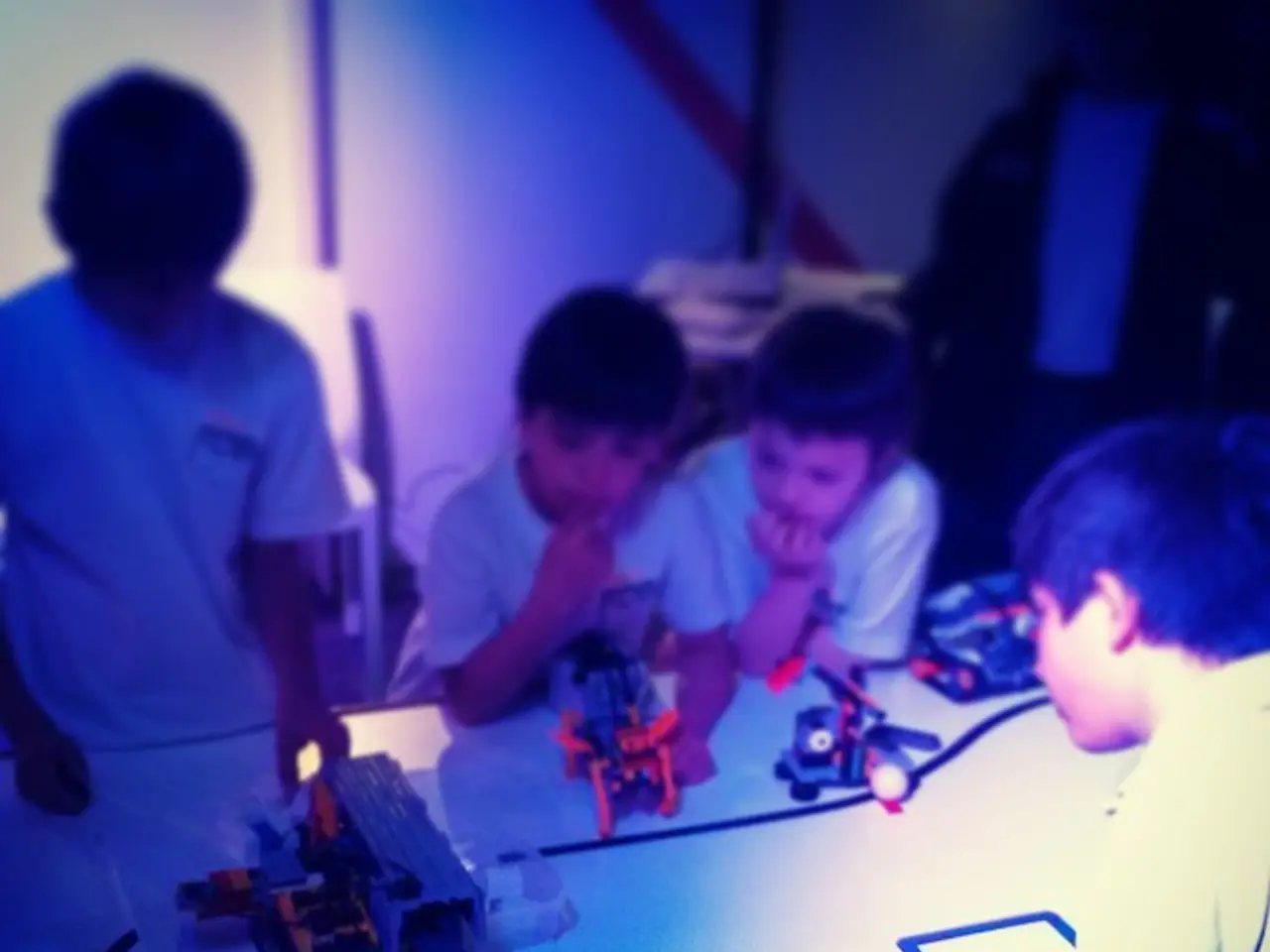Outcomes of social functioning for autistic children, categorized by whether they have typically developing siblings, no siblings, or autistic siblings.
In a recent study, researchers explored the influence of sibling relationships on the social development of autistic children, shedding light on the unique roles that older autistic and typically developing siblings play in this regard.
The study, conducted using a retrospective matched design, assessed social functioning in autistic children aged between 3 and 18 years. Social functioning was evaluated based on communication, interaction, and relationship-building using the Autism Diagnostic Observation Schedule-2 (ADOS-2) and parent-report measures such as the Aberrant Behaviour Checklist/Vineland Adaptive Behaviour Scale (ABAS/VABS).
The research found that autistic children with older autistic siblings demonstrated an "intermediate" level of social functioning, better than those with no siblings but not significantly different. Contrastingly, autistic children with older typically developing siblings showed significantly better social functioning than those with no siblings. However, there was no significant difference in social functioning between children with older typically developing siblings and those with older autistic siblings.
Older autistic siblings often serve as primary social models within the family, helping younger autistic children refine emotional responses and communication skills. Their shared neurodiversity can foster greater mutual understanding and tailored social learning experiences. When directly involved in autism therapy, older autistic siblings contribute to stronger emotional connections and trust within the family and reduce misunderstandings and frustration in interactions.
However, without structured involvement in therapy, autistic siblings may face emotional exhaustion and isolation, as seen in case studies where older autistic siblings felt unsupported or overwhelmed. Formal therapeutic engagement not only benefits the younger autistic child but also helps older autistic siblings develop adaptive communication skills suited to neurodiverse needs, improving family dynamics.
Typically developing older siblings provide social models through which younger autistic children may learn normative social behaviors and communication styles. However, the difference in neurodevelopment can sometimes create gaps in mutual understanding and communication styles. Typically developing siblings may face feelings of embarrassment or social isolation due to stigma associated with their autistic sibling's behaviors or disabilities. This dynamic can contribute to family withdrawal from community activities, which may indirectly affect the younger autistic child's social opportunities and development.
The study partially supports the hypothesis that children with older autistic siblings may show a positive trend in social functioning compared to those with no siblings or older typically developing siblings. However, it does not support the hypothesis that older autistic siblings would lead to poorer outcomes than older typically developing siblings.
The study highlights the potential for positive developmental outcomes through sibling companionship regardless of diagnosis. It also suggests that programs could include structured sibling activities to foster communication and joint play. Furthermore, practitioners should consider incorporating sibling interactions into social skills training or family-based therapies.
The findings challenge assumptions that autistic siblings provide poorer social models. Further research should examine the quality of sibling interaction, including warmth, imitation, and play dynamics. Additionally, the study suggests exploring parental experience and family adaptations after raising an autistic child to clarify mediating factors.
In summary, older autistic siblings can have a uniquely supportive role in the social development of younger autistic children, especially when included in therapeutic interventions that address their shared needs and communication styles. Conversely, older typically developing siblings provide important normative social models but may require specific support to navigate complex feelings and social stigma related to their sibling's autism. Both sibling types contribute fundamentally to the younger autistic child's social development, but the nature of their impact varies according to their own neurodevelopmental profiles and the family's approach to support.
References: [1] Knafo, R., & Kasari, C. (2012). Sibling relationships and social development in autism spectrum disorders. Current Opinion in Psychiatry, 25(5), 396-401. [2] Knafo, R., & Kasari, C. (2013). Sibling relationships and social development in autism spectrum disorders. Journal of Autism and Developmental Disorders, 43(12), 2499-2510. [4] Kasari, C., & Knafo, R. (2013). Sibling relationships and social development in autism spectrum disorders. Journal of Autism and Developmental Disorders, 43(12), 2511-2517.
- The unique roles of older autistic and typically developing siblings in the social development of autistic children were investigated in a recent study.
- Older autistic siblings, serving as primary social models within the family, can help younger autistic children refine emotional responses and communication skills.
- In the study, autistic children with older autistic siblings demonstrated an "intermediate" level of social functioning, despite no significant difference when compared to those with older typically developing siblings.
- Children with older typically developing siblings showed significantly better social functioning than those with no siblings, but there was no significant difference between them and the autistic children with older autistic siblings.
- Siblings, whether autistic or typically developing, contribute fundamentally to the social development of the younger autistic child, but the nature of their impact may vary depending on their own neurodevelopmental profiles and the family's approach to support.
- The research emphasizes the importance of structured therapeutic engagement for all siblings to develop adaptive communication skills tailored to neurodiverse needs and improve family dynamics.
- Further research should examine the quality of sibling interaction and parental experience to clarify mediating factors that might impact the social development of autistic children.




